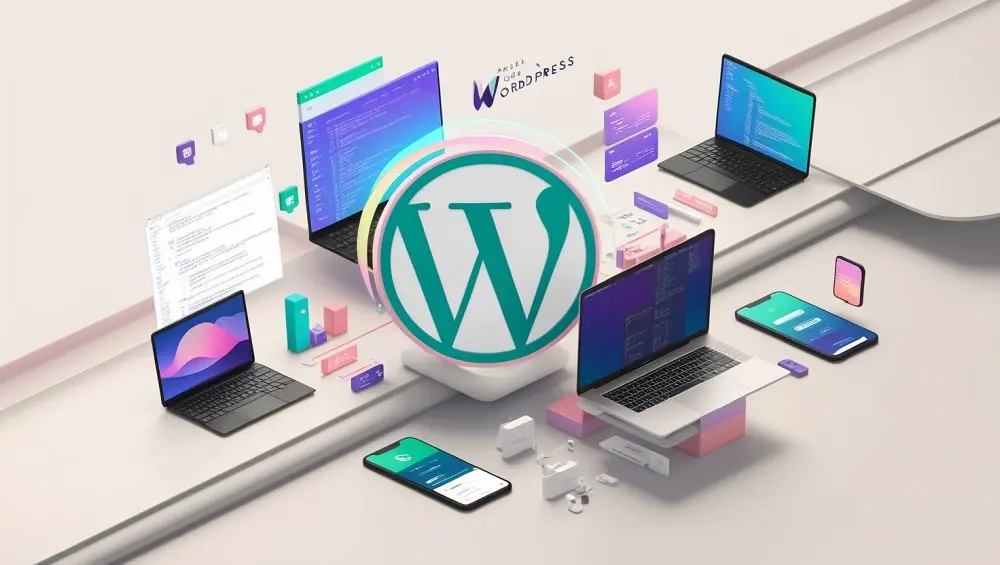
Choosing the right platform for your website is a crucial decision that can significantly impact your business's online presence. WordPress and custom development are two popular options, each with its own set of advantages and drawbacks. In this article, we’ll explore the key differences between WordPress and custom development to help you determine which is the best fit for your business needs.
WordPress: An Overview
WordPress is a powerful and flexible content management system (CMS) that powers over 40% of all websites on the internet. It offers a wide range of themes, plugins, and features that make it easy to create and manage websites without extensive technical knowledge.
Advantages of WordPress
- Ease of Use
- WordPress has a user-friendly interface, allowing non-technical users to easily update and manage content.
- A vast library of themes and plugins enables quick customization and feature integration.
- Cost-Effective
- WordPress is an open-source platform, meaning it’s free to use. However, costs may arise from premium themes, plugins, and hosting services.
- It offers a budget-friendly solution for small businesses and startups.
- SEO-Friendly
- WordPress is designed with SEO in mind, offering plugins like Yoast SEO to help optimize your website for search engines.
- Large Community Support
- With a large and active community, finding solutions to common issues or getting support is easier.
Drawbacks of WordPress
- Limited Customization
- While WordPress offers many customization options, it may not meet the unique needs of complex projects.
- Heavy reliance on plugins can lead to performance issues and security vulnerabilities.
- Security Concerns
- Being a popular platform, WordPress is a frequent target for hackers. Regular updates and security measures are necessary to protect your site.
- Performance Issues
- Websites with numerous plugins can experience slower load times, which may impact user experience and SEO rankings.
Custom Development: An Overview
Custom development involves building a website from scratch, tailored to the specific needs and requirements of a business. This approach offers complete control over design, functionality, and performance.
Advantages of Custom Development
- Full Customization
- Custom development allows for a unique design and functionality tailored to your business goals.
- It provides the flexibility to create a website that stands out and aligns with your brand identity.
- Enhanced Performance
- Custom-built websites are optimized for performance, resulting in faster load times and better user experience.
- Developers can fine-tune every aspect of the site to ensure optimal performance.
- Greater Security
- Custom websites can be built with robust security measures tailored to your specific needs, reducing the risk of cyber threats.
- Scalability
- Custom development allows for easy scalability, accommodating future growth and changes in your business.
- New features and functionalities can be added without the limitations of a pre-built CMS.
Drawbacks of Custom Development
- Higher Initial Cost
- Custom development involves a higher upfront investment compared to WordPress, as it requires skilled developers and more development time.
- It may not be the best option for businesses with limited budgets.
- Longer Development Time
- Building a website from scratch takes more time than using pre-built templates and plugins.
- The development process may take several months, depending on the complexity of the project.
- Ongoing Maintenance
- Custom websites require regular maintenance and updates, which may involve additional costs and resources.
- Businesses may need to rely on developers for ongoing support and updates.
Conclusion
Choosing between WordPress and custom development depends on your business needs, budget, and long-term goals. WordPress is an excellent choice for businesses looking for a cost-effective, user-friendly solution with a quick setup. However, if your project requires unique features, high performance, and scalability, custom development offers greater flexibility and control.
Ultimately, the right choice will depend on your specific requirements and priorities. By carefully considering the pros and cons of each option, you can make an informed decision that aligns with your business objectives.